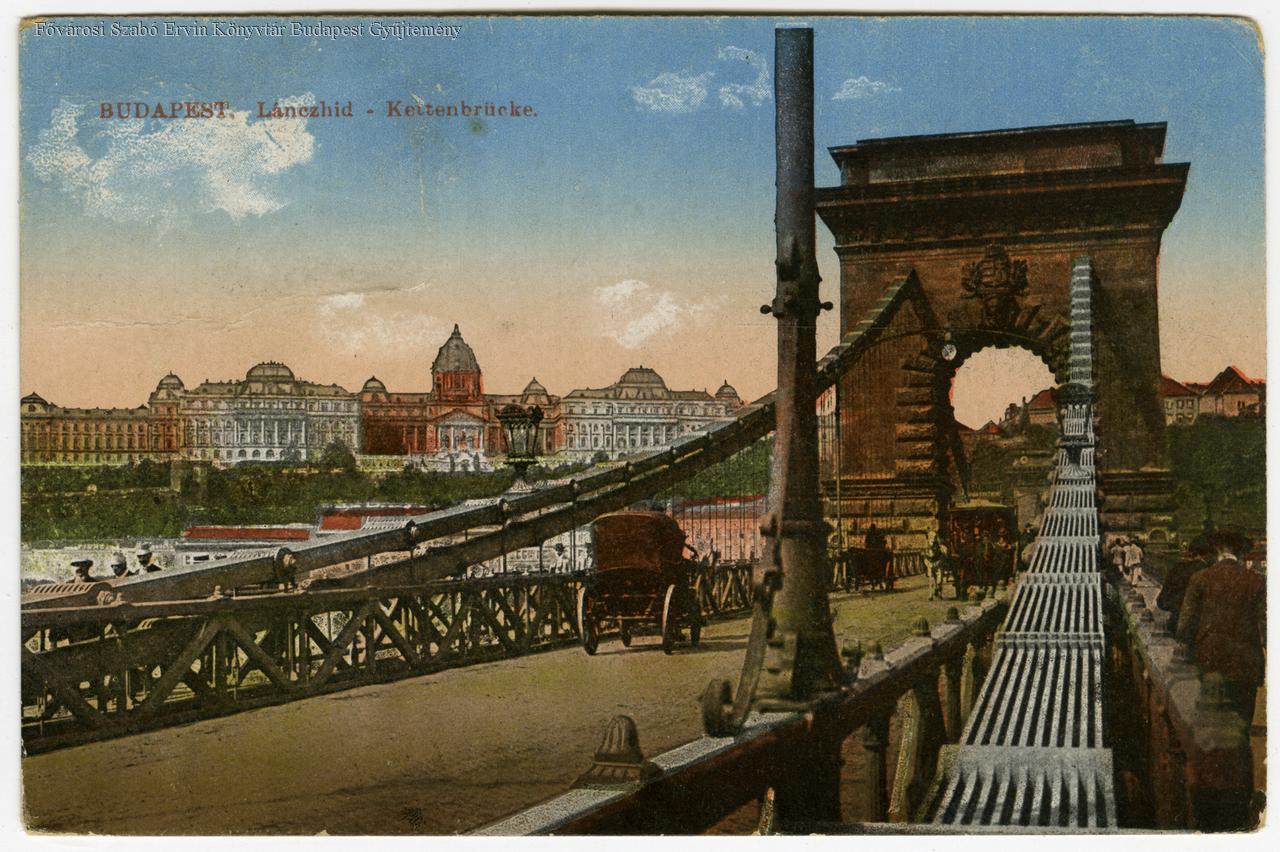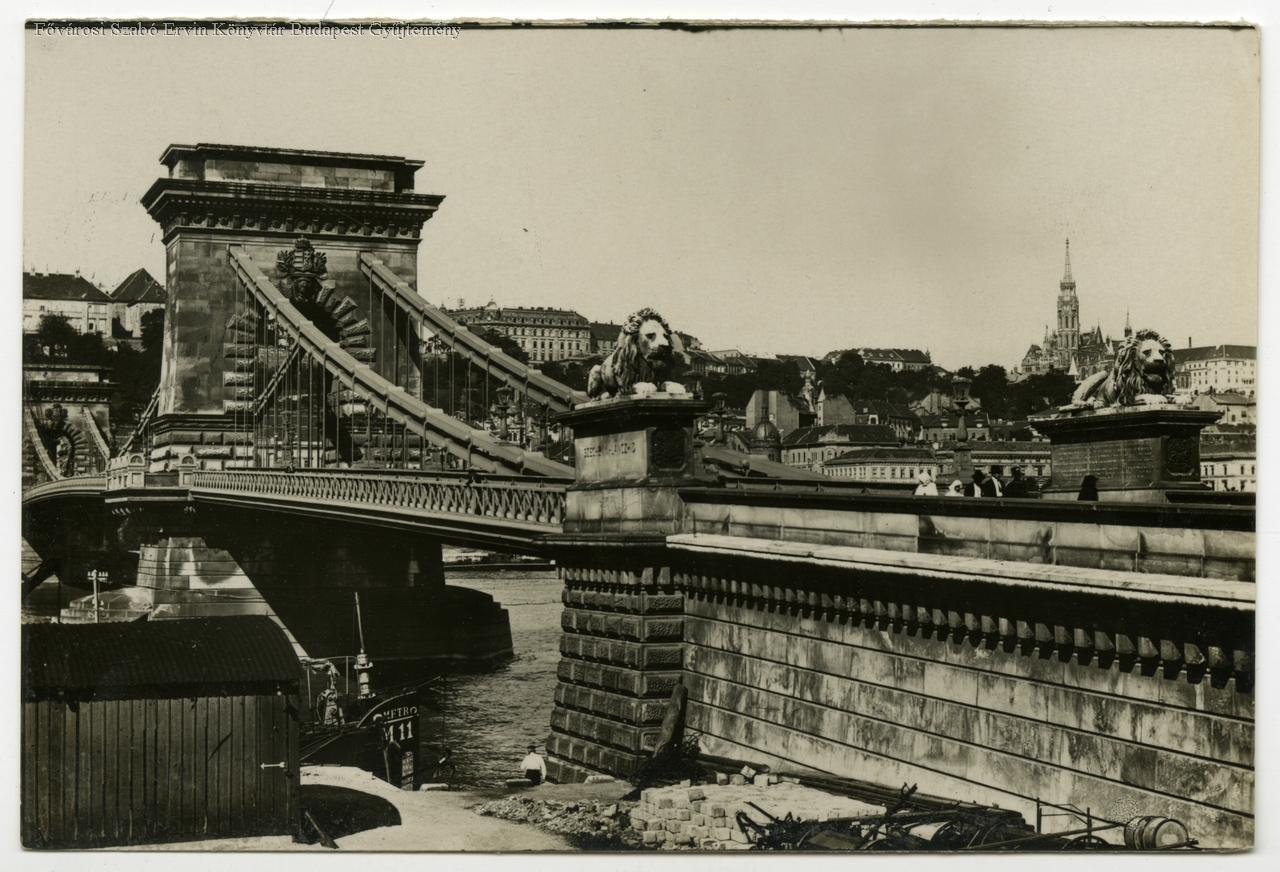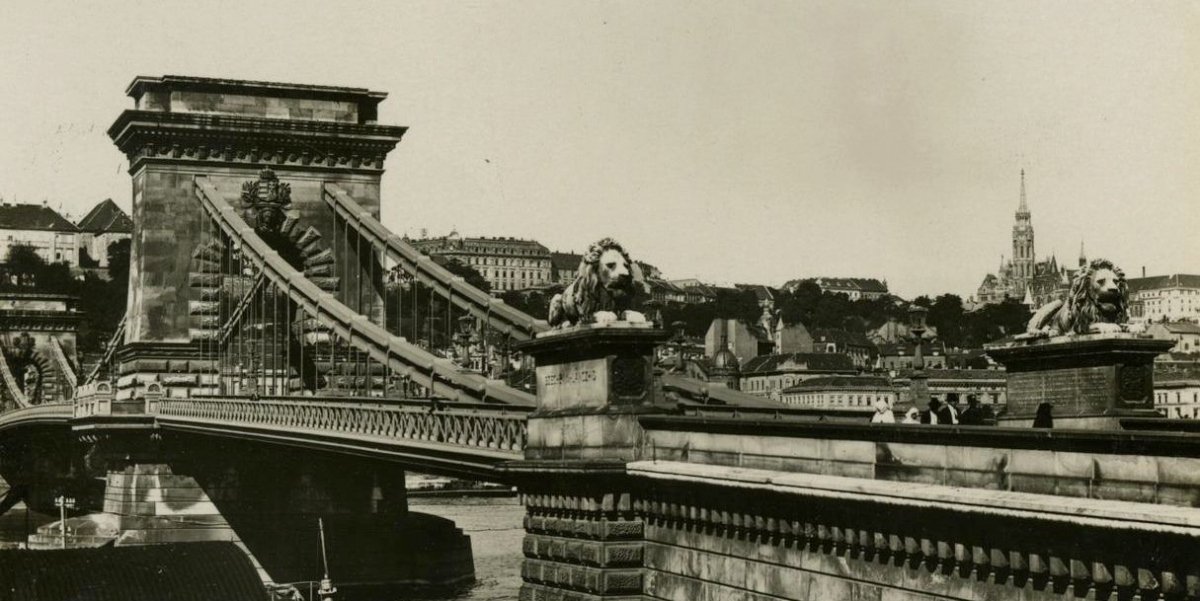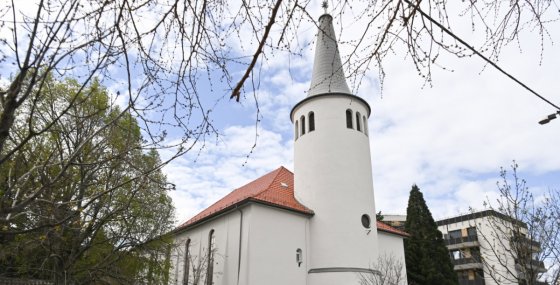The old Chain Bridge, opened in 1849, was a brilliant but in essence rudimentary structure. The design was scaled to the transport requirements of the 1830s and the technical possibilities of the time. As a result, it was largely made of wood, and the iron used was also limited by the technological level of the age. The bridge was inspected in detail in 1907. The committee included the engineers who had designed the world's largest chain bridge (Erzsébet Bridge), i.e., István Gállik and József Beke. Experts found that the bridge was worn, almost dangerous, and in urgent need of reinforcement. Two solutions were put forward.
The cheaper would have strengthened the old structure, while the more expensive solution proposed a completely new bridge, only retaining the stone elements of the original.

The original structure of Chain Bridge on a postcard from 1910 (Photo: FSZEK Budapest Collection)
In the end, decision-makers opted for the more expensive project, which cost 5.1 million Crowns at the time. (Later, expert realised that the bridgeheads also had to be strengthened, which increased the costs by 1.5 million.) István Gállik and József Beke developed the plans, following Professor Antal Kherndl's theory of statics. Work began in 1913, following lengthy preparations.
The new Chain Bridge fundamentally differs from its predecessor. Although for the uninitiated eye the bridge seemed almost unchanged, it was modified in many details. Naturally, the length and size of its spans did not change, nor did the width of the roadway, as these were determined by the positions fo the chain.

The structure of the bridge was completely rebuilt (Photo: FSZEK Budapest Collection)
The exteriors of the bridgeheads and pylons remained unchanged, all necessary reinforcement happened below the surface. The roadway (at least in the early years) was similarly paved with wooden cubes, but the graceful wooden railing between the road and the pavement was replaced with a high, robust steel railing that also increased the strength of the bridge. Because the new chains were, on average, twice as long as those of the old bridge, the space between the vertical cables was increased, eliminating the graceful harp-like character the original bridge had had when viewed from the side.
No wooden parts were left on the bridge. Another interesting figure changed. While the original bridge had no rivets, only 18640 bolts, the new bridge’s riveted steel structure contains one hundred thousand rivets.
The mains cables were wider and taller than on the original bridge. Their height increased from 26 to 36 centimetres and the thickness of the plate bundles from 60 to 70 centimetres. The new bridge was built entirely of steel and weighed 5,194 tons. The width of the pavements also increased by 40 cm on either side and were covered in asphalt instead of wooden planks.
The temporary fixtures of the electric lighting installed to supplement gas lighting, called gallows by the public, were removed. The new road lights were completely electric.
As noted in a previous article, the name of the bridge was also a novelty. The inscription Széchenyi-lánchíd ('Széchenyi chain bridge') was added at the time, bringing the long debate about whether and, if so, what name, Chain Bridge should bare to an end.

Scaffolding built for the installation of the new structure (Photo: FSZEK Budapest Collection)
The construction of the bridge was also affected by World War I, which broke out in 1914, as some of the workers were conscripted. Nevertheless, they were able to hold the planned opening in the Autumn of 1915. Because of the war, Chain Bridge was returned to the public with virtually no ceremony at 8 am on 27 November 1915. A correspondent for Est wrote on 28 November 1915:
"The famous and beautiful bridge in Budapest was opened this morning for the second time. At eight-thirty traffic was already as heavy as if it had never been closed."
A committee, councillors Ede Eckermann and Albert Szántó, department councillor Count Ernő Splényi, director of the company charged with maintaining state-owned bridges, Ernő Zerneck, Chief Technical Advisor, Gyula Fischinger, and the engineer Dezső Zsigmondy, attended a small opening ceremony.
About ninety people stood in the morning cold (it was only 4 degrees) waiting for the bridge to be opened. Seventy in Buda and twenty in Pest. Flags flew on the structure, and female ticket collectors collected the toll on the Pest side. Those present cheered the first car to cross, but there were no speeches, no ribbon or other ceremony, only a minor scramble on the Pest side for the first ticket and the seal of the ticket book. The bridge toll remained in place and was collected from those crossing from Pest to Buda.
Pesti Hírlap even thought to know the names of the first people to cross. Andor Doby, the secretary of Pesti Hírlap, was the first to reach Pest, while Lieutenant General Jamniczky the first to arrive in Buda.

The weight of the iron built into the bridge more than doubled to 5,200 tons (Photo: FSZEK Budapest Collection)
While there was no grand opening a veritable rain of honours fell on the constructors. The contemporary press published the awards and titles in detail. Naturally, the top executives received official accolades, and so did the individuals who completed the most outstanding work in each phase of the project.
Ministerial Adviser Sándor Hartig, who oversaw the work in the Ministry of Trade, was created a Hungarian noble styled as Gölnicbánya. Alajos Hauszmann, Antal Kherndl, Szilárd Zielinski, József Kauser, Ede Eckermann, Albert Szántó, Ernő Zerneck also received awards. József Beke, István Gállik, Gyula Pischinger and Ferenc Gottlieb were awarded the Order of the Iron Crown, 3rd class.
The Magyarország periodical criticised an interesting detail, namely the new colour of the bridge, which the correspondent described as “uncertain green”. Three alternative colours were considered, and a test of each applied to the bridge. The three alternatives were light grey, ash grey, and a greenish dray, darker than these.

The rebuilt bridge in 1930 (Photo: FSZEK Budapest Collection)
The current bridge is (mostly) 105 years old, 75% of the chains were reused after World War II. Everything that had to be replaced was completed according to the 1913 plans.
Cover photo: The rebuilt bridge in 1930 (Photo: FSZEK Budapest Collection)




































Hozzászólások
Log in or register to comment!
Login Registration